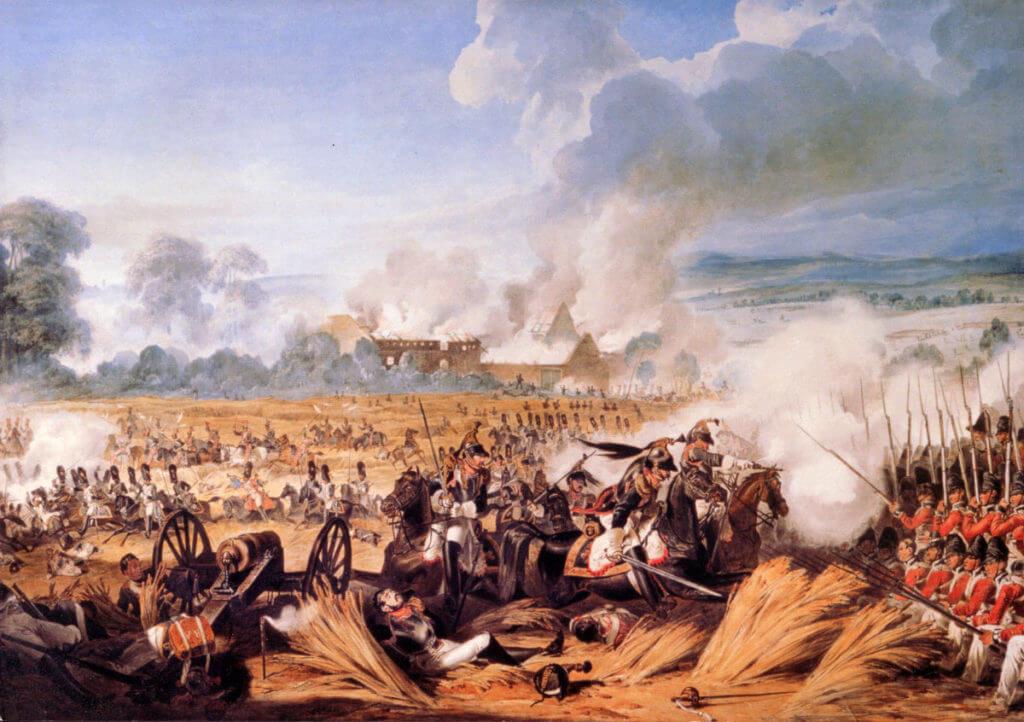
They may advance slowly, but they will continue to advance, so long as they have fuel. Soft ground may slow a tank assault, but armoured vehicles never drop from exhaustion. What’s more easily forgotten however is that sloppy conditions quickly sap horses of their strength. From a 21st-century viewpoint, it’s not difficult to grasp how mud can hamper an attack. The lower ground between the two armies was very muddy indeed.

The British forces were positioned at the top of a slight rise, which, given the condition of the ground, would substantially slow any charge. Heavy rain on the eve of the battle had left the ground soft and muddy. The conditions at Waterloo were not favourable for horses. Marshal Ney, visible by his bright red hair, leads a charge without infantry support. A cavalryman himself, he was happy to personally lead charges himself. At Waterloo, the commander of French forces on the ground was Marshal Ney. When they did charge, the result was (as we shall see) impressive, but sometimes doubtfully effective.įor their part, the French cavalry were well trained and equipped as well, but probably less well mounted than the British. All cavalry should charge in two lines, of which one should be in reserve.”Īt Waterloo, Wellington generally held his cavalry back. They never … think of manoeuvring before an enemy – so little that one would think they cannot manoeuvre, excepting on Wimbledon Common and when they use their arm as it ought to be, viz. “ a trick our officers of cavalry have acquired of galloping at everything, and then galloping back as fast as they gallop on the enemy. Because of this, the Duke of Wellington was famously suspicious of his cavalry. Cavalrymen and their mounts tended to get caught up in the excitement of a charge and often rode down the enemy long after they’d scattered, significantly reducing their own effectiveness on the field of battle.

It stood as a powerful force capable of inflicting significant damage on an opponent, but it was prone to getting, literally, carried away in the heat of battle. The British cavalry was famous for its bravery and the quality of its horses. It also provided a mobile force that could be quickly moved across the field to support infantry in moments of crisis.Īt the Battle of Waterloo, as was the case in other battles of the Napoleonic era, the cavalry was often positioned behind the infantry where it could be used to turn back friendly units that were trying to flee the field – not a noble role, but an important one nonetheless. (Image source: WikiCommons) “Cavalrymen and their mounts tended to get caught up in the excitement of a charge and often overran the enemy lines significantly reducing their effectiveness on the field of battle.”īY THE END of the 18 th century, the primary role of cavalry was to pursue and destroy a fleeing army. Cavalry failed to deliver the ‘knock out punch’ at Waterloo, yet their presence on the field changed the course of the battle.


 0 kommentar(er)
0 kommentar(er)
